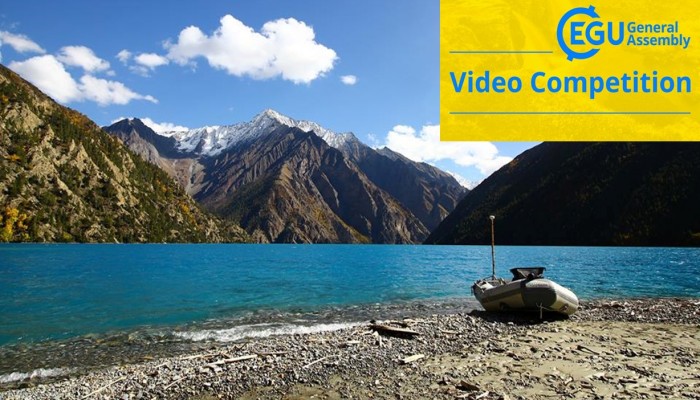
If you’ve not heard about our Communicate Your Science Video Competition before it gives early career scientists the chance to produce a video up-to-three-minutes long to share their research with the general public. The winning entry receives a free registration to the General Assembly the following year.
In this GeoTalk interview, Laura Roberts talks to Zakaria Ghazoiu, a PhD student whose video following his journey to the Himalayas to collect core samples from lakes was voted as the winning entry of the 2015 Communicate Your Science Video Competition. He’s since produced a longer video in collaboration with his colleague Arnaud Watlet, which will be screened at this year’s GeoCinema. Read on to hear about their top tips for filming a science video and what inspired them to use video to communicate their science in the first instance.
Before we get started, could you introduce yourself and tell our readers a little more about your research?
Z: I’m in a joint PhD with Grenoble University and Ghent University in the iTECC project (investigating Tectonism Erosion Climate Couplings). iTECC is an inter-European research group funded and sponsored by the Marie Curie Actions. We investigate the links between climate, erosion and tectonics in the Himalaya using a variety of tools that span the geoanalytical spectrum. My research topic is on the influence of tectonic versus climatic controls on erosion and exhumation rates in the Quaternary and understanding the Holocene evolution of the monsoon in Western Nepal based on river sediment and lake sediment cores.
A: I am a geologist and I am doing a PhD in hydrogeophysics over groundwater storage related problems in karst environments. Apart from that, I am an old friend of Zakaria and I joined him on his fieldwork in Nepal, together we made “Inside Himalayan Lakes”.
Some of our readers may yet not be familiar with the competition, can you tell us a little more about it and what made you decide to take part in the competition?
A and Z: This competition gave us, as scientists, the opportunity to promote our work and share it to a large audience, broader than our good old scientific community. Making a video is a perfect way to show what our research focuses on and how the environment we study it evolves.
Had you filmed any science videos prior to producing ‘Inside Himalayan Lakes’?
Z: Prior to making “Inside Himalayan Lakes” , I was editing “Pan Tsang”, with Arthur Ancion and Xavier Moucq, two other friends and professional film makers. “Pan Tsang” is a long movie on my first and second field trips to Nepal which tells the story of the human and scientific experience of being part of a long expedition.
A: I had already done some filming during previous fieldwork at an Indonesian volcano. That project was bigger and is still in production, though. I have also completed a master in film writing during my scholarship at the University of Brussels. At that time, I was member of ‘Noyau Mou’, a small association producing short movies.
What inspired you to film your fieldwork and submit the entry to the competition?
Z: We really wanted to share our human and scientific adventure with others. Not only for the outreach aspect of our project but mainly to broadcast our passion.
A: When Zak asked me to join him on his mission to Himalaya, we already knew that we could come back with amazing shots. Then came the idea to make a short clip over the mission itself. It was only a few weeks after we got back from Nepal that we became aware of the Communicate Your Science Competition. After looking at our rushes (unedited footage), we thought that it was possible to make our video fitting for the competition. As we wanted no voice over in the film, we asked Bakthi Mills, a graphic designer friend of ours, to create an animation that could illustrate the core sampling process. As for the rest, we were convinced that the images spoke for themselves.
We can’t go into too much detail here, but how did you go about collecting the footage and turning it into a film?
A: The footage was the most exciting part for us. We had two DSLR cameras, a tripod and an additional GoPro camera. We decided not to bring any microphone as I knew from experience that it is an additional concern that can be difficult to deal with in such an environment.
Z: That was indeed a big challenge during the expedition. Finding the balance between our scientific work and filming as much as we could while being on record. We had plenty of technical problems because of the solar electricity, cold temperatures (-20°C), the humidity, or working on such small boat while we wanted to shoot.
A: Another tricky part was to edit the movie. We had a lot of scenes but the message was not really clear yet. We had to make the movie fit into 3 minutes so it was a kind of inspiring constraint. We decided to make the movie look like the fieldwork in miniature. Then we had the thread that connected our rushes all together.
What’s your top tip for aspiring science filmmakers?
Z: Open your eyes. Feel the environment around you.Take a camera and go.
A: Don’t go too fast, though. My best advice would be to think about your movie, and what you want to say before the footage. Then, once you get a clear and simple message in your mind, start filming. The rest will come with your rushes.
Which part of the filming process did you enjoy the most?
Z: That is a tricky question, shooting is really my passion except when you do not have more battery and you loose the moment you wanted. Editing is really enjoyable but that can be a real nightmare.
A: As the fieldwork was about lakes, it was important to shoot scenes directly from the boat. As we were working on the boat, we had the idea to attach the GoPro directly to the core sampler and the result was amazing. Time-lapse sequences were also nice to capture. We tried a few times in the night and it was actually a really cool way to relax and wash away the stress of the day in the evening.
Would you recommend filmmaking as a way for scientist to reach out to a broad audience?
Z: I think that is one of the best way to reach out to a broad audience but you have to know in advance which audience you want to reach. I think it is really important during the editing process.
A: I believe indeed that it is an excellent way to reach people that you would never reach with classic publication tools. I would even say that it is crucial to use such media to open your research to the public. Somehow, this is part of our moral duty to society and it may awake young people’s interest in becoming researchers.
Would you recommend others taking part in the Communicate your Science Video Competition?
Z: I would warmly recommend to get involve in the Communicate your Science Video Competition. It is a really good introduction and experience for other movie competitions.
A: Go for it! It is an excellent opportunity to encourage you to make the movie you always thought about. Plus, you will have to share it with your friends and family to earn votes. They will love understanding more what you are doing in your research.
Has this interview inspired you to go forth and produce a science video? The Communicate Your Science Video Competition is currently open for submissions.
If you are pre-registered to attend the General Assembly in April, go ahead and produce a video with scenes of you out in the field, or at the lab bench showing how to work out water chemistry; entries can also include cartoons, animations (including stop motion), or music videos, – you name it! To submit your video simply email it to Laura Roberts (networking@egu.eu) by 4 March 2016.
For more information about the competition take a look at this blog post. For inspiration, why not take a look at the finalist videos from the 2014 and 2015 editions?

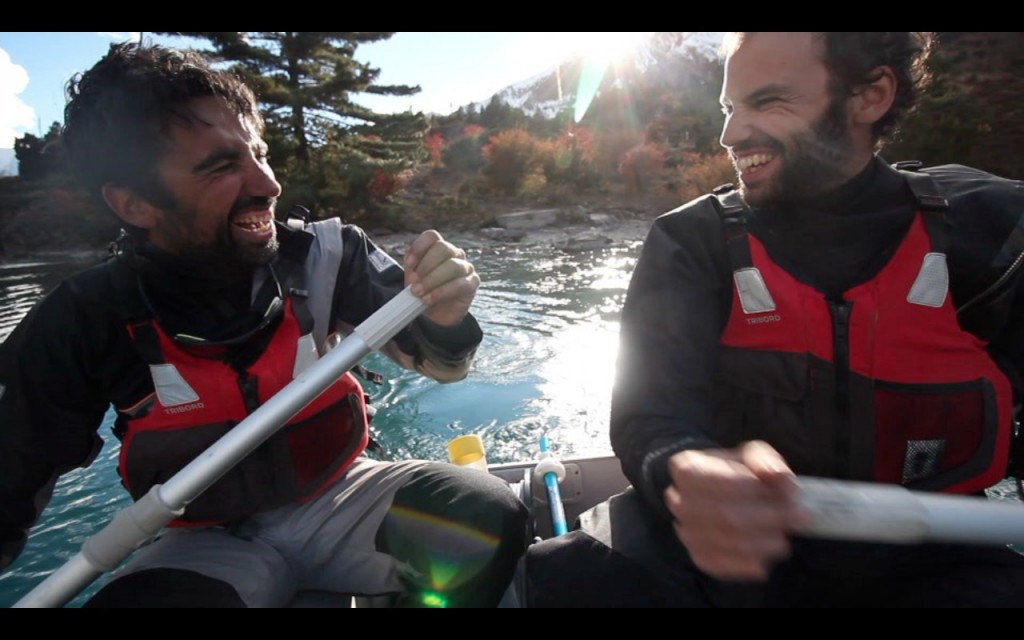
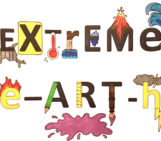
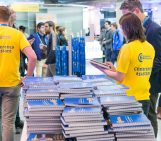

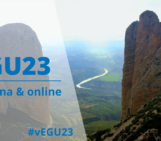
Pingback: GeoLog | GeoTalk: Beatriz Gaite on why videos are a great tool for communicating your research to a broad audience